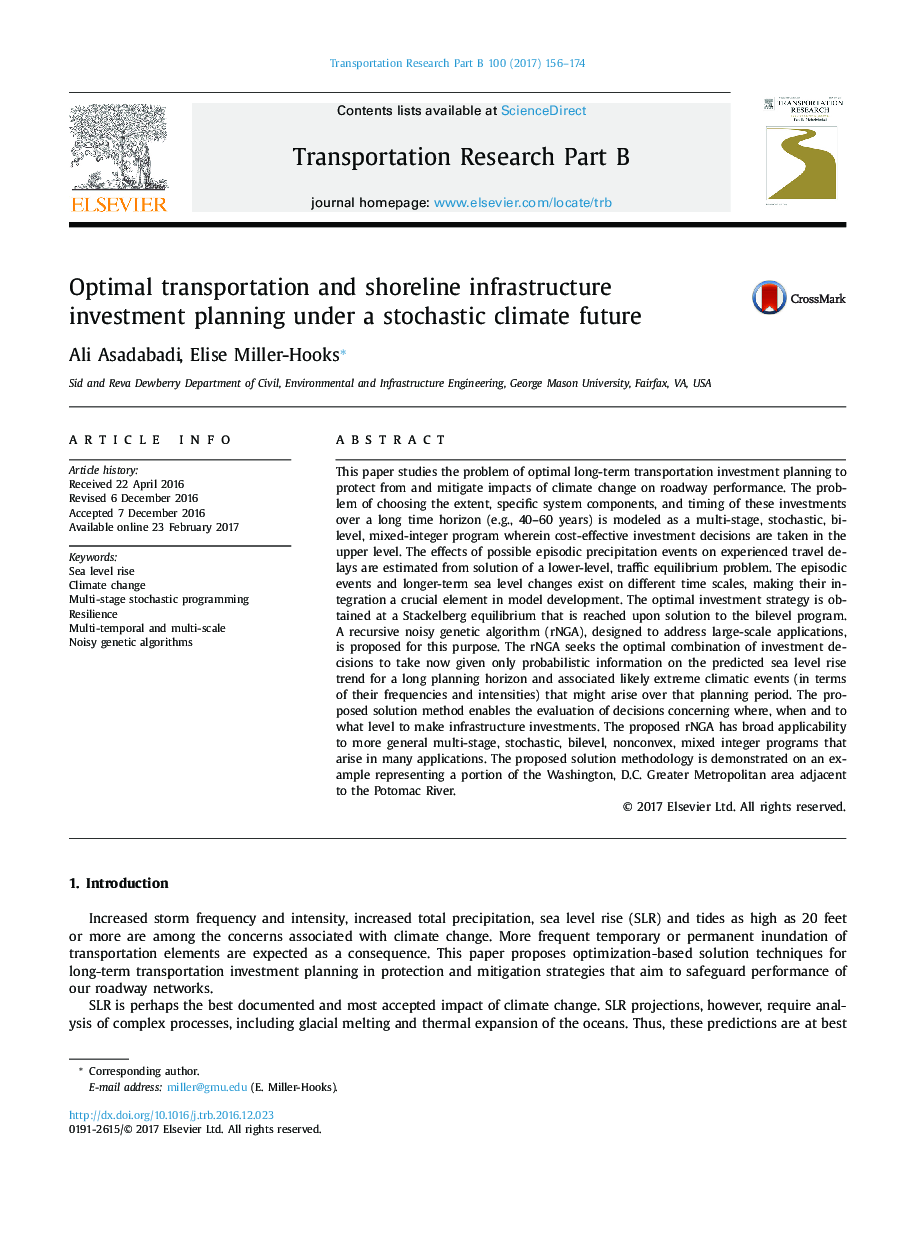| Article ID | Journal | Published Year | Pages | File Type |
|---|---|---|---|---|
| 5127036 | Transportation Research Part B: Methodological | 2017 | 19 Pages |
â¢Multi-temporal modeling for combating effects of sea level rise and climate change.â¢Recursive noisy genetic algorithm for large-scale applications.â¢General applicability for multi-stage, stochastic, bilevel, nonconvex programs.â¢Washington, D.C. case study indicates expected long-term payback.â¢Supports optimal investment location, timing and extent.
This paper studies the problem of optimal long-term transportation investment planning to protect from and mitigate impacts of climate change on roadway performance. The problem of choosing the extent, specific system components, and timing of these investments over a long time horizon (e.g., 40-60 years) is modeled as a multi-stage, stochastic, bi-level, mixed-integer program wherein cost-effective investment decisions are taken in the upper level. The effects of possible episodic precipitation events on experienced travel delays are estimated from solution of a lower-level, traffic equilibrium problem. The episodic events and longer-term sea level changes exist on different time scales, making their integration a crucial element in model development. The optimal investment strategy is obtained at a Stackelberg equilibrium that is reached upon solution to the bilevel program. A recursive noisy genetic algorithm (rNGA), designed to address large-scale applications, is proposed for this purpose. The rNGA seeks the optimal combination of investment decisions to take now given only probabilistic information on the predicted sea level rise trend for a long planning horizon and associated likely extreme climatic events (in terms of their frequencies and intensities) that might arise over that planning period. The proposed solution method enables the evaluation of decisions concerning where, when and to what level to make infrastructure investments. The proposed rNGA has broad applicability to more general multi-stage, stochastic, bilevel, nonconvex, mixed integer programs that arise in many applications. The proposed solution methodology is demonstrated on an example representing a portion of the Washington, D.C. Greater Metropolitan area adjacent to the Potomac River.
